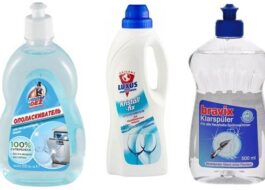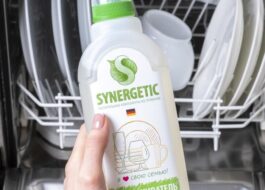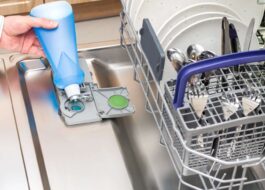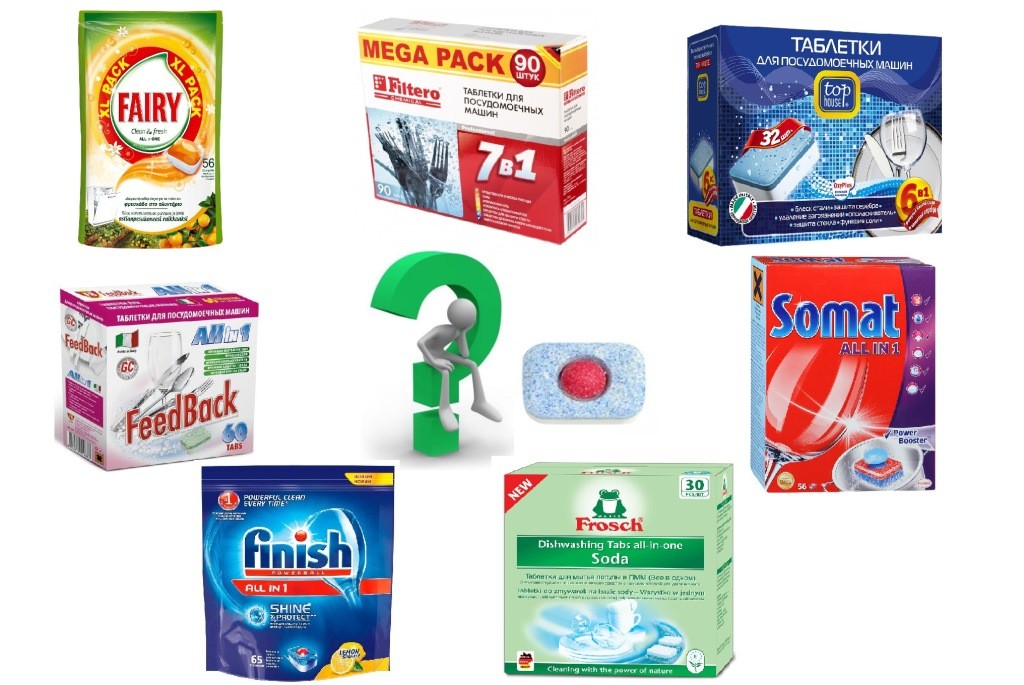Composition of dishwasher rinse aid
 Streaks and drips may appear on plates and mugs even after a cycle in a top-notch dishwasher. This happens if in a hurry you forget to add rinse aid to the tray. It is this product that gives the appliances shine, ensuring impeccable cleaning quality.
Streaks and drips may appear on plates and mugs even after a cycle in a top-notch dishwasher. This happens if in a hurry you forget to add rinse aid to the tray. It is this product that gives the appliances shine, ensuring impeccable cleaning quality.
Is this product harmful to humans? Let's look at the composition of rinse aids for dishwashers. We'll tell you which products are worth paying attention to.
What components does the rinse aid contain?
The composition of dishwasher rinse aid is always indicated on the packaging. Many manufacturers describe components in general terms, so buyers get the impression that the products are the same. This is not entirely true; this issue needs to be understood.
Most often, the following components can be seen in the composition of rinses for PMM:
- ethanol;
- citric acid;
- water;
- Surfactants;

- lactic acid;
- preservatives;
- esters;
- polycarboxylates;
- bleaching agents.
Rinse aid should be used as an addition to the main detergent.
Rinse aid prevents water droplets from collecting on dishes. This prevents the formation of streaks on the devices. Thus, after washing, kitchen utensils look like new.
If we take as a basis the opinion that all dishwasher rinse aids are identical, it is not clear why some are many times more expensive than others. Is this really an overpayment for the brand? Let's look at an example of the composition of popular products from different price categories.
Let's compare the compositions of rinses
Prices for dishwasher rinse aids in stores vary greatly.You can purchase the product for $0.7 or ten times more expensive for the same volume. What explains this difference? To give an answer, we will analyze the compositions from different price categories.
- Rinse aid "Cinderella". Suitable for all types of dishwashers. The manufacturer indicates that the product consists of the following components: water (more than 30%), a mixture of acids (5-15%), nonionic surfactants (up to 5%), solvent (less than 5%), functional additive. The cost of a half-liter bottle is about $0.6. Users note that “Cinderella” is no different in its action from more expensive analogues - it does not leave streaks and does not have an unpleasant odor.

- Rinse aid for PMM Sodasan. The product is as safe as possible; it does not contain sulfates or phosphates that are harmful to the body and nature. Ingredients include purified water, citric acid, ethanol, citrate and sugar-based surfactants. Can be used by allergy sufferers, suitable for processing children's dishes. The cost of a liter bottle is about $6. The product has several European certificates confirming the quality of the product.
- Finish from a Polish manufacturer. The cost of a 0.4 liter package is approximately $1-2. It contains nonionic surfactants that prevent cutlery from becoming dull and dark, preservatives that prevent the growth of mold and other harmful microorganisms and polycarboxylates, they enhance the effect of other components.
- Frosch rinse aid from a German manufacturer. The main feature of the product is its ability to completely decompose in the environment. Suitable for washing children's dishes and cutlery for allergy sufferers. Contains phosphate-free nonionic surfactants and fruit acid. The cost of a 0.75 liter bottle is approximately $2-3.
- Sonett product for PMM.Contains castor oil, vegetable alcohol, water, balsamic additives (collected from wild plants), alkyl polyglucoside. Organic, environmentally friendly rinse aid is suitable for all types of dishwashers and is biodegradable. The cost of a half-liter bottle is about $7.
As you can see, the components of expensive and cheap rinses are different. It is necessary to choose a safe product that does not contain sulfates, preservatives, emulsifiers, or surfactants from petroleum distillates. It is desirable that the product is biodegradable and has quality certificates.
Reading the composition on the packaging, you can see general phrases, for example: “functional additive”, “non-ionic surfactants”, “preservative”. It is better to avoid purchasing such rinses. “Veiled” components may well be unsafe for the body.
Interesting:
Reader comments
- Share your opinion - leave a comment
Categories
Washing machine repair


For buyers

For users

Dishwasher

















Add a comment